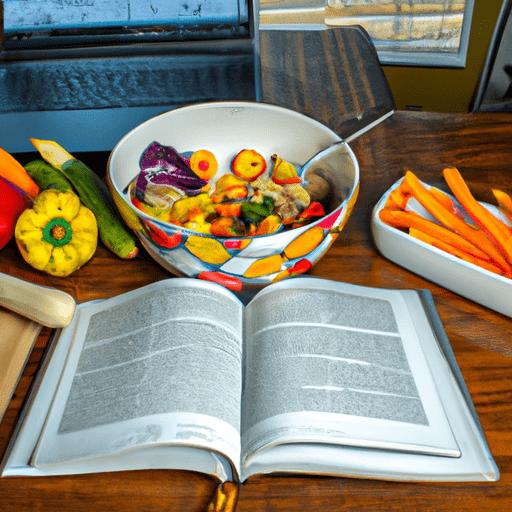In the quest for optimal health and fitness, understanding and managing one’s nutritional intake has become paramount. As more individuals strive to achieve specific dietary goals, whether for weight loss, muscle gain, or general well-being, the importance of tracking macronutrients and caloric balance has never been more pronounced. Fortunately, the digital age offers an array of sophisticated tools designed to simplify this process, providing users with precise insights into their daily consumption patterns. This article delves into the best tools available for tracking macronutrient intake and maintaining caloric balance, offering a comprehensive guide to help you make informed choices tailored to your nutritional needs. By leveraging these tools, you can take control of your diet with precision and confidence, ensuring that your dietary habits align seamlessly with your health objectives.
Understanding Macronutrient Tracking: Key Features to Look For
When evaluating tools for tracking your macronutrient intake, it’s crucial to identify features that enhance usability and accuracy. Comprehensive food databases are indispensable, allowing you to easily log a variety of foods with precise nutritional information. Look for apps that provide a barcode scanner feature, which can save time by instantly retrieving data from food packaging. Another essential feature is customizable goal settings, enabling you to tailor your macronutrient targets based on personal dietary needs or fitness objectives.
Consider tools that offer real-time progress tracking with visual graphs and charts to help you easily understand your daily intake versus goals. Cross-platform accessibility ensures you can log and monitor your diet from any device, whether it’s your phone, tablet, or desktop. integration with other health apps or wearable devices can provide a holistic view of your health metrics, enhancing your ability to maintain a balanced diet effectively.

Top Caloric Balance Tools: Comprehensive Analysis and Comparisons
In the quest for optimal health, understanding your macronutrient intake and maintaining a balanced caloric equation is crucial. Fortunately, a variety of sophisticated tools are available to aid in this endeavor. Among the leading options, MyFitnessPal stands out with its extensive food database and user-friendly interface, allowing users to effortlessly log meals and track macronutrients. Cronometer offers a more detailed nutrient breakdown, perfect for those seeking precision in their nutritional analysis. For those who prefer a more personalized approach, Lose It! combines goal setting with an intuitive tracking system to ensure users stay on course.
- MyFitnessPal: Comprehensive database, community support, customizable goals.
- Cronometer: Detailed micronutrient data, premium features for advanced users.
- Lose It!: Easy-to-use interface, barcode scanner, meal planning options.
- Fitbit App: Integrates with wearable devices, tracks activity and nutrition.
Each tool has its unique strengths, catering to different user needs. Whether you are a fitness enthusiast, a meticulous planner, or someone new to dietary tracking, these tools provide the flexibility and accuracy needed to achieve your health objectives.
Expert Recommendations for Optimal Nutrient Management Apps
For those serious about managing their nutrition, leveraging technology can make a significant difference. Experts recommend focusing on apps that offer a comprehensive suite of features designed to simplify the tracking process while providing valuable insights. Here are some standout features to consider when choosing a nutrient management app:
- Comprehensive Database: Ensure the app has a robust food database that includes a wide range of foods and beverages, making it easy to log meals without manual input.
- Customizable Goals: Look for apps that allow you to set personalized macronutrient ratios and caloric targets, tailored to your dietary needs and fitness objectives.
- Barcode Scanning: This feature speeds up the logging process by allowing you to quickly add store-bought items with a simple scan.
- Integration with Wearable Devices: Apps that sync with fitness trackers and smartwatches can provide a holistic view of your caloric balance by combining dietary data with activity levels.
- Detailed Nutrient Analysis: Go beyond calories and macros by choosing apps that offer insights into micronutrients, helping you identify potential deficiencies or surpluses.
By selecting an app with these expert-recommended features, you’ll be well-equipped to take control of your nutritional intake and achieve your health goals with precision.
Integrating Technology into Your Nutrition Plan: Best Practices
Incorporating technology into your nutrition plan can greatly enhance your ability to track macronutrient intake and maintain caloric balance. Several tools are available to assist in this endeavor, each offering unique features tailored to different needs. MyFitnessPal stands out for its extensive food database and user-friendly interface, allowing you to log meals effortlessly. It also provides a breakdown of macronutrients, making it easier to ensure you’re meeting your dietary goals. Another excellent option is Cronometer, which offers detailed nutrient tracking and customizable reports. This tool is particularly beneficial for those who want to delve deeper into micronutrient intake alongside their macronutrient and calorie tracking.
For those who prefer a more integrated approach, Lose It! offers a comprehensive platform that syncs with various fitness trackers, providing a holistic view of your caloric intake versus expenditure. Additionally, Yazio is known for its intuitive design and personalized meal plans, making it a great choice for beginners looking to manage their diet effectively. Here are some key features to consider when selecting a tool:
- Ease of Use: Look for an app with a simple interface to facilitate consistent use.
- Database Size: A larger food database can help ensure accuracy in tracking.
- Customization: The ability to set personalized goals and track specific nutrients can enhance your dietary management.
- Integration: Consider tools that sync with other devices and apps for a more comprehensive health overview.
Leveraging these tools effectively can streamline your nutritional tracking process, helping you achieve and maintain your health objectives with precision.
